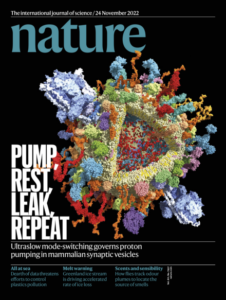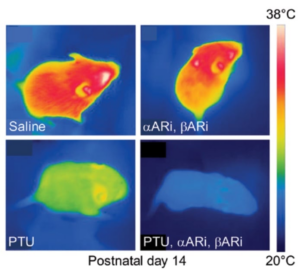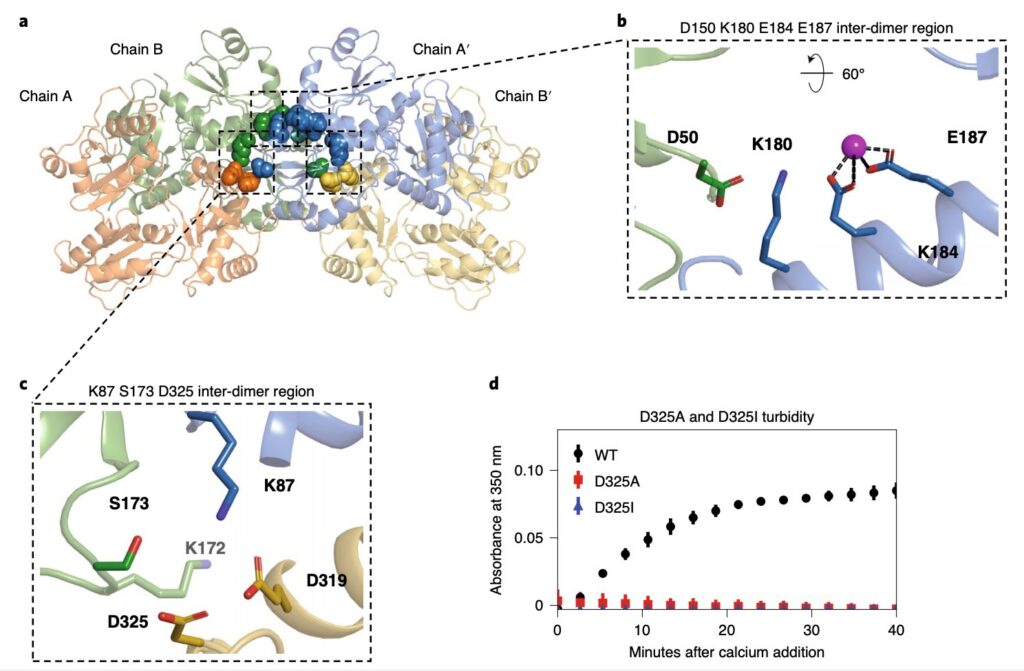Nature – Pump, rest, leak, repeat by Dr. Michael Grabe
The cover illustration shows vacuolar-type adenosine triphosphatases (V-ATPases, large blue structures) on a synaptic vesicle from a nerve cell in the mammalian brain. V-ATPases pump protons across cellular membranes, and in neurons this process is essential for loading neurotransmitters into synaptic vesicles. In this week’s issue, Dimitrios Stamou and his colleagues shed light on V-ATPase dynamics in single native synaptic vesicles. By imaging proton-pumping at the single-molecule level, the researchers were able to see that V-ATPases do not pump continuously











